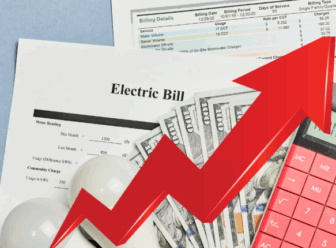By Mike Tidwell
First came the snowfall last winter. It buried Baltimore in three massive storms, shattering all accumulation records going back 127 years. Then came the thunderstorms of July and August. They pummeled much of Maryland with extreme rain and 70 mile-per-hour winds, knocking out power to over half a million customers.
Then, of course, there was the heat. The heat! It was the hottest summer on record in both Baltimore and Washington, D.C. Twenty eight people perished across Maryland due to the heat. Cornfields withered from the mountains to the sea. And not just here. Around the world the weather has been whacked out in 2010. Biblical flooding in Pakistan. Shocking wildfire conditions in Russia.
So here’s the standard disclaimer: There’s no way to prove — or disprove — that any single weather event is connected to global warming. But our top climate scientists — including Dr. James Hansen, director of NASA’s Goddard Institute for Space Studies — tell us these are precisely the sort of extreme events we would expect to see as the planet continues to warm due to our combustion of fossil fuels. Maryland, in other words, can expect more weird weather — punishing rain, damaging wind, extreme snow (more on this later) — as long as the planet continues to bake from rising carbon pollution.
What’s the solution? We need a worldwide clean-energy transformation as soon as possible, of course. What’s Maryland’s role? Windmills, it turns out. We need to build lots and lots of windmills.
Two facts to keep in mind. First, despite impressive environmental policies in the past, Maryland still gets over half its electricity from the combustion of dirty, planet-warming coal. Second, we’re sitting on one of the biggest wind power resources in America, just off the coast of Ocean City. By placing modern wind farms about 10 miles off the shoreline, barely visible, we could get the equivalent of two thirds of our current electricity load from the ocean breeze. This would also create tens of thousands of new jobs for the state while stabilizing electricity prices for Marylanders for the next 20 years.
Indeed, these interrelated issues — extreme weather, clean energy, new jobs — are so important that every candidate running for state-level office in Maryland should make a simple pledge. Here it is: “I solemnly promise, as a public servant, to work for passage of state legislation in 2011 that guarantees construction of at least one major wind farm off Maryland’s coast as early as 2015.” This ought to be an easy promise to make, for Republicans and Democrats, given the vital economic factors at play.
New Jersey and Delaware have already adopted serious laws to advance offshore wind power. With sea-level rise alone threatening to ravage Maryland’s 3,000 miles of shoreline, and with Congress deadlocked over climate policy, we need to follow the lead of our neighboring states.
But perhaps extreme weather is our biggest motivation of all. Last week NASA reported that 2010 is on track to be the hottest year on record worldwide. A warmer planet vaporizes more water from lakes and oceans and moves it skyward. It’s simple evaporation. And what goes up must come down. It’s not our imagination that rainstorm intensity is rising in our region. In a study released last March by the University of New Hampshire, scientists examined precipitation patterns from Maine to New Jersey over the past 60 years. The study revealed an amazing uptick in multi-inch rain events across the region, linked to rising temperatures.
Then there’s the snow. Maryland’s economy was hammered last winter by historic blizzards. Global warming? How? Well, first, we didn’t set records for cold temperatures last winter. Not even close. What we did was shatter records for precipitation in the form of snow. Again, a steadily warming planet means more moisture in the atmosphere, so it’s understandable that significant snowfall events are on the upswing in the United States even as temperatures rise significantly. It’s the extra water vapor. Atmospheric moisture, in fact, rose five percent in the 20th century while the average temperature soared a full four degrees Fahrenheit in the Northeastern U.S.
All of which is why we need to transition away from heat-trapping energy sources, especially oil and coal. For Maryland the most cost-competitive alternative is offshore wind power, by far. Europe already has 38 offshore commercial wind farms. Delaware, meanwhile, is preparing to build a major ocean wind project in the near future, and New Jersey is likely to follow. These states have created green-energy standards and tax incentives specifically designed to speed up investment in offshore wind power.
Maryland has not taken these steps. This is too bad since just one full-sized wind farm — 600 megawatts — would create over 8,000 new jobs and provide a big potential boost to the Maryland steelmaking industry. Beach tourists, meanwhile, would see only white specks on the horizon and migratory bird populations would be safe, based on Europe’s documented experience.
So Annapolis lawmakers must act in 2011. As climate change accelerates and our weather grows more extreme by the day, we need extreme speed in the development of our state’s cleanest, biggest, safest energy resource.
Mike Tidwell is executive director of the Chesapeake Climate Action Network. His e-mail is mtidwell@chesapeakeclimate.org.




